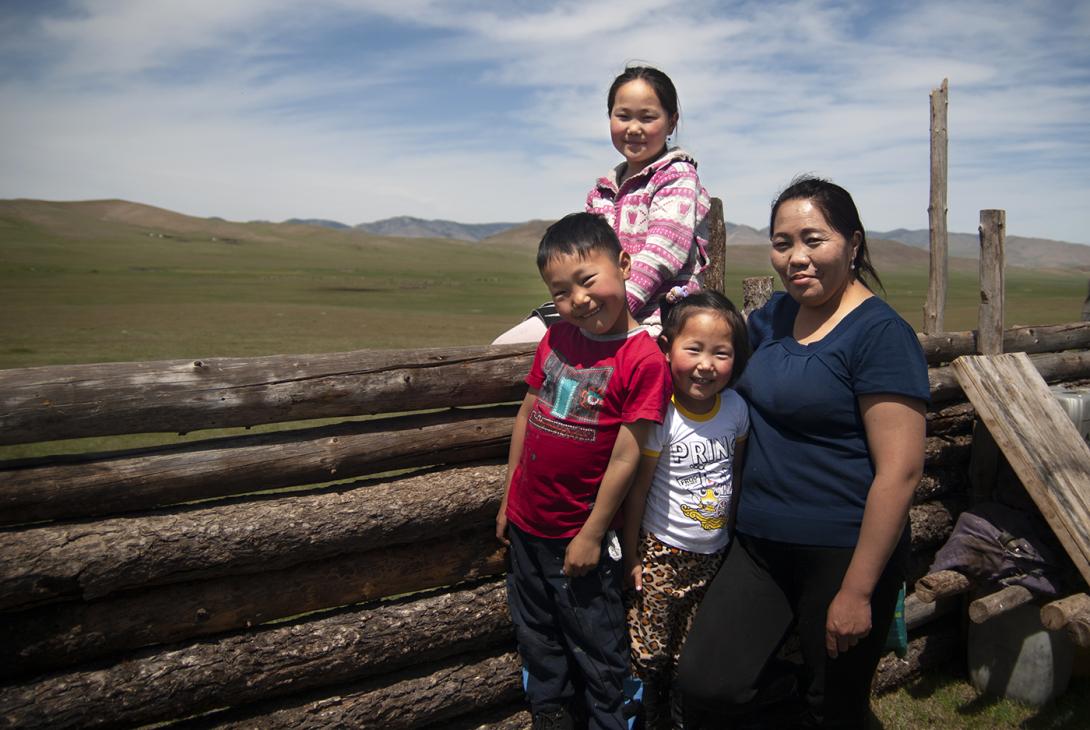
Mongolian Herders Borrow a Tool From the Recent Past
cross-posted from YES! Magazine
 Perched on his motorcycle, Galbadrakh Purevsuren lights his first hand-rolled cigarette of the day and surveys the grassy valley below. Sheep and goats tear at the frosty grass, horses dot the hills, and somewhere, farther down, are the yaks. A few sharp blasts of the horn send the animals running. Galbadrakh, who like most Mongolians is identified by his given name, tosses the last twist of his cigarette and turns the bike back toward camp.
Perched on his motorcycle, Galbadrakh Purevsuren lights his first hand-rolled cigarette of the day and surveys the grassy valley below. Sheep and goats tear at the frosty grass, horses dot the hills, and somewhere, farther down, are the yaks. A few sharp blasts of the horn send the animals running. Galbadrakh, who like most Mongolians is identified by his given name, tosses the last twist of his cigarette and turns the bike back toward camp.
There, a shimmer of heat rises from the stovepipe of the ger—the circular, felt-covered homes that nomadic herders across Mongolia have been living in for centuries, known in the West by their Russian name, yurt. Inside, Galbadrakh’s three children move half-awake in their shared bed, while his wife, Terbish-Ragchaa Galsan, pulls a thick, dripping slab of clotted cream from a bowl of yesterday’s yak milk.
On this quiet May morning, the family has everything they need: The annual income for their yak wool has just been paid; the heavy milking season is just a few weeks away; and, since it’s a weekend, Terbish-Ragchaa and the children are at home. Most days, they live in the provincial center about 9 miles from the summer pasture lands, so the kids, ages 3 to 9, can attend school while Galbadrakh manages the herd.
Most days aren’t this easy.
Across Mongolia, nomadic herders today lead a very different life than just a generation ago. Terbish-Ragchaa’s and Galbadrakh’s parents never owned cars or motorcycles, didn’t have solar panels or cell phone bills, and didn’t need more than two outfits for each of their children—one school uniform and a deel, the traditional tunic. They didn’t even need to pick their kids up from school at the end of the week, or live separately during the school year, because the local negdel—an agricultural cooperative of the Soviet-influenced Mongolian People’s Republic—was responsible for delivering kids to and from their gers.
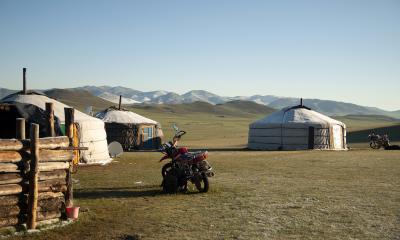 “They had a decent life in the pastureland even though they had no money,” Terbish-Ragchaa says. Now, herders have more worries. Money is always tight. The climate is getting drier. The pasture is degraded. In their region, Terbish-Ragchaa says, the grass grows half as high as it used to. In other regions, it no longer grows at all. But some of the solutions, they’re finding, might not be so different from their parents’.
“They had a decent life in the pastureland even though they had no money,” Terbish-Ragchaa says. Now, herders have more worries. Money is always tight. The climate is getting drier. The pasture is degraded. In their region, Terbish-Ragchaa says, the grass grows half as high as it used to. In other regions, it no longer grows at all. But some of the solutions, they’re finding, might not be so different from their parents’.
To make ends meet without selling their livestock one by one, some herders, including Terbish-Ragchaa and Galbadrakh, are beginning to borrow a tool from the past, forming cooperatives so that, together, they can manage the pastureland, sell directly to factories, and form other value-adding businesses. This time, it’s not mandated by the state—herders own the livestock and the cooperatives themselves.
Doing this goes against the ingrained independence of nomads, who trust and rely on few people aside from relatives. It also stirs up memories from the collapse of the Soviet system. But modern economic pressures are making it harder to go it alone, so in villages and districts across Mongolia, herders are banding together.
As a result, many herders’ incomes are stabilizing and growing. They’re developing new businesses and products, and diversifying the food and fiber industry that sustains a significant portion of the country’s economy, people, and national identity. They’re finding a new way, redefining an old system, to do what people in this remote and harsh landscape have always done well: survive.
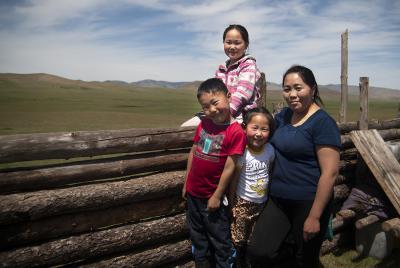
Terbish-Ragchaa, who was 9 years old when the Soviet Union collapsed in 1991, looks back on the earlier Communist era as a time of relative ease. Herders of the People’s Republic worked hard, but their income was guaranteed—and since nearly all the animals they raised were owned by the state, Terbish-Ragchaa believes their personal stress then was less than what she’s feeling now.
From the early 1920s to the early 1990s, Mongolia was essentially a Soviet satellite—not formally part of the USSR, but heavily influenced by it. Pastureland and the production of meat, dairy, wool, and cashmere were strictly managed, and herd sizes were maintained near what state officials had agreed was the carrying capacity of the land—around 25 million total sheep, horses, goats, cows, camels, and yaks. Goats—known to be destructive eaters but prized for their valuable cashmere wool—were maintained at less than 20% of all livestock.
In the 1990s, things got more complicated. A year after the Soviet collapse, Mongolia adopted its own democratic constitution and freed its economy from state control. After decades under communist rule, Mongolians had freedom and had regained control over their livestock. For the first time in nearly a century, their borders were open for trade beyond Russia and the former Eastern Bloc.
But as state-owned cooperatives disbanded and industries were privatized, foreign investors came digging for copper, gold, and coal. Widespread unemployment pushed people into subsistence herding. Meanwhile, the world developed a taste for fine Mongolian cashmere.
Scientists and economists agree that these changes were as devastating as they were rapid. After decades of stability, the number of livestock skyrocketed. Today, the National Statistics Office reports there are more than 66 million herd animals in the country—40% of which are goats.
Shombodon Dorlig, an agricultural economist who currently chairs the Rural Investment Support Center, a local nongovernmental organization, says that from the very beginning of the transition, the Mongolian garment industry—which no longer had local cooperatives to gather and deliver strictly planned quantities of fiber—couldn’t keep up with the supply of cashmere or its rising price. Today, government officials report that around 80% of Mongolian cashmere is exported as minimally processed fiber, so foreigners reap most of the profit from its manufacture into finished goods.
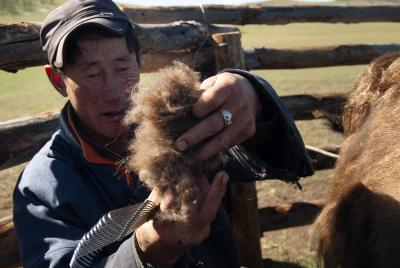 The rising price of cashmere and unregulated freedom to grow herds as large as the herders want has had serious consequences: All those animals have devastated the landscape. Meanwhile, the climate crisis has hit Mongolia harder than many other countries: Temperatures have risen at twice the rate of the global average, surpassing 2 degrees Celsius since 1940, according to the Ministry of Environment, and local scientists and herders have noted that rainfall is less consistent—coming in deluges or not at all. With less grass to build the animals’ fat reserves, the harsh winters—in which temperatures often drop to minus 40 degrees—can kill whole herds.
The rising price of cashmere and unregulated freedom to grow herds as large as the herders want has had serious consequences: All those animals have devastated the landscape. Meanwhile, the climate crisis has hit Mongolia harder than many other countries: Temperatures have risen at twice the rate of the global average, surpassing 2 degrees Celsius since 1940, according to the Ministry of Environment, and local scientists and herders have noted that rainfall is less consistent—coming in deluges or not at all. With less grass to build the animals’ fat reserves, the harsh winters—in which temperatures often drop to minus 40 degrees—can kill whole herds.
The natural response of individual herders is to keep even more animals, triggering a vicious cycle. Research over the last decade has shown that between climate change and overgrazing, Mongolia’s temperate grassland—the largest expanse on Earth—is vanishing. The most commonly cited statistics say more than 70% of the pastureland is affected by degradation or permanent desertification.
While Terbish-Ragchaa and Galbadrakh understand these dynamics—they see the grass is shorter than it used to be—survival takes precedence. But in 2012, they joined the Ar Arvidjin Delgerekh Cooperative, which has an office in Tsetserleg, a city of about 16,000 and the seat of Arkhangai province, which is a six- to eight-hour drive west from the capital Ulaanbaatar on rutted backcountry roads. This led to increased and diversified sources of income—and showed them that switching goats out for yaks benefited both the land and their livelihoods.
“World experience shows that cooperatives are the best tool for overcoming the ‘curse of smallness,’” economists Renata Yanbykh, Valeriy Saraikin, and Zvi Lerman wrote in their 2018 study on the revival of Russian agricultural cooperatives. However, that experience has been slow to reach most former Soviet socialist nations.
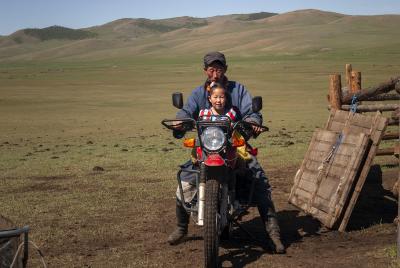 A 2017 report by the United Nations Food and Agriculture Organization found that “market-oriented scholars accordingly expected to see rapid development of agricultural service cooperatives in the Post-Soviet countries” due to large numbers of smallholders and exploitative buyers. In fact, they found the development of cooperatives in those countries “lags far behind” most of the world.
A 2017 report by the United Nations Food and Agriculture Organization found that “market-oriented scholars accordingly expected to see rapid development of agricultural service cooperatives in the Post-Soviet countries” due to large numbers of smallholders and exploitative buyers. In fact, they found the development of cooperatives in those countries “lags far behind” most of the world.
Quentin Moreau, who lives and works in Ulaanbaatar as the Mongolia representative for French NGO Agronomes et Vétérinaires Sans Frontières, has been helping to promote cooperative development in Mongolia for years. He says there’s a Western idea that cooperatives are a good solution but that it was difficult to translate.
“We went pitching the idea to people—very naively—and it took me some time to understand that the cooperative system they remembered was very different,” Moreau says. And that it fell apart.
Slowly, perceptions are changing, Moreau says. And in Mongolia—as with many post-communist countries across Europe and Asia—the cooperative model is beginning to take hold.
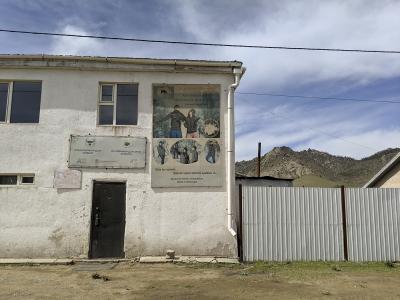 On the first floor of Ar Arvidjin Delgerekh Cooperative’s building in Tsetserleg, a woman works alone at a circular linking machine to sew sleeves to shoulders, collars to neck holes. She carefully slides every tiny end-stitch of the paired panels over a ring of needle-like teeth, then turns a hand crank, sewing the sweater parts together with a nearly invisible seam. She can make about four sweaters a day, linking panels of machine-knit baby yak wool sourced from 2- and 3-year-old animals.
On the first floor of Ar Arvidjin Delgerekh Cooperative’s building in Tsetserleg, a woman works alone at a circular linking machine to sew sleeves to shoulders, collars to neck holes. She carefully slides every tiny end-stitch of the paired panels over a ring of needle-like teeth, then turns a hand crank, sewing the sweater parts together with a nearly invisible seam. She can make about four sweaters a day, linking panels of machine-knit baby yak wool sourced from 2- and 3-year-old animals.
Most of the fiber the cooperative buys is sold to companies in Europe, the center of high-end spinning and textile manufacturing. But by creating their own brand—Baby Yak—and spinning and knitting some of their fiber in-house, they can add value, create jobs, and increase incomes for everyone involved.
Terbish-Ragchaa first joined the cooperative in 2012 as a spinner. Forced to live apart from her husband with her oldest child as she attended school in Tsetserleg, Terbish-Ragchaa had no income or job prospects until she learned of the cooperative. It was through them that she discovered the value of her family’s yaks and saw what their fiber could become. “We never saw the yak wool knitwear,” she says, “and they are so warm!”
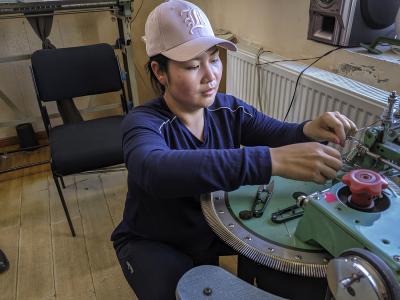 So her family sold most of their goats and have since doubled their yak herd to about 40, which in addition to producing wool, has added to the family’s dairy sales, as well. The cooperative also connects herders with tourists interested in paying to stay with nomadic families—a relative boon at $10 per night and more than the income made from selling one kilogram of yak wool for cooperative members whose annual incomes seldom surpass $10,000.
So her family sold most of their goats and have since doubled their yak herd to about 40, which in addition to producing wool, has added to the family’s dairy sales, as well. The cooperative also connects herders with tourists interested in paying to stay with nomadic families—a relative boon at $10 per night and more than the income made from selling one kilogram of yak wool for cooperative members whose annual incomes seldom surpass $10,000.
Bayarmagnai Batsuuri, director of Ar Arvidjin Delgerekh, believes that this cooperative “can be a model for other herders, because we add value to our raw materials.” Founded in 2010 with support from Agronomes et Vétérinaires Sans Frontières, the cooperative has delivered dividends totaling about $45,000 to about 220 members in six counties in the province, he said. That isn’t much per member, but it has built trust in the cooperative—a first step on the path to resolve pasture degradation in Arkhangai.
Herder cooperatives like Ar Arvidjin Delgerekh are springing up across the country, each with its own flavor, depending on the needs of its members. In Dundgobi province, herders have created a dairy cooperative to make and sell cheese each autumn. This has become an important supplement to herders’ spring cashmere income, improving cash flow before the school year starts and harsh winter hits.
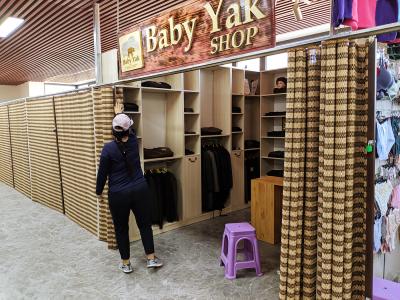 In the remote westernmost province, Bayan-Ulgii, a new herder cooperative is depositing the income from livestock exports into a savings and credit union in which the herders share ownership. The cooperative credit union also provides herders with the small loans needed to buy feed and survive the winter—loans they cannot easily or affordably access from traditional banks. “A bank works to make its owners rich,” says Ahai Turdikhan, director of the co-op. “The credit union works for the good of its own members.”
In the remote westernmost province, Bayan-Ulgii, a new herder cooperative is depositing the income from livestock exports into a savings and credit union in which the herders share ownership. The cooperative credit union also provides herders with the small loans needed to buy feed and survive the winter—loans they cannot easily or affordably access from traditional banks. “A bank works to make its owners rich,” says Ahai Turdikhan, director of the co-op. “The credit union works for the good of its own members.”
As in most post-Soviet countries, Mongolian cooperatives struggle with the legal and tax systems governing—or impeding—their work. Bayarmagnai, of Ar Arvidjin Delgerekh, wishes he could have the tax-free status many European countries offer cooperatives—a recommendation backed by the United Nations Food and Agriculture Organization.
Regardless, Bayarmagnai has plans for growth: expanding the co-op’s small workshop in Tsetserleg to become a proper factory that will bring more benefits to the members and community.
Across town, next to the busy bus station, a “Made in Arkhangai” sign welcomes visitors to a building that opened in April. On the second floor, the Baby Yak Shop’s undyed yak-fiber sweaters, hats, scarves, and more fill the shelves of a small, neat kiosk.
With the help of NGOs and European brands focused on sustainable fiber, the market for yak wool is growing. As the cooperative earns more and turns over more dividends, the incentives to replace goats with yaks will grow, too. And with income streams from tourists as well as yak fiber, dairy, and meat, his members will make a sufficient living with fewer overall animals, Bayarmagnai thinks.
Though the threat of climate change lingers, he says the yaks are resilient. Like the Mongolian people themselves in the hardest of times, they endure.
All photos by Sarah Trent
Originally published under a CC BY-NC-ND 4.0 license
Go to the GEO front page
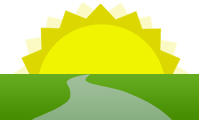
Add new comment